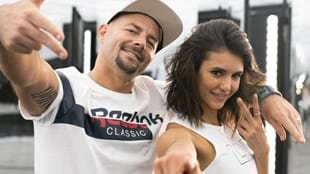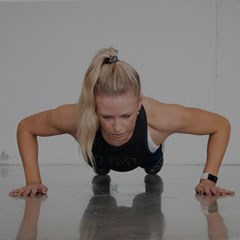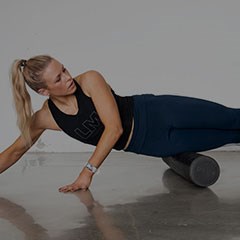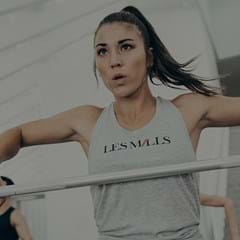As the program director for Les Mills’ BODYJAM™ workout you’ve choreographed hundreds of dance routines over the years, what is the secret to a great dance workout?
There are no rules, and there is certainly no sure-fire way to do it. Experimentation and exploring new movements, new genres and new movement styles is one of the greatest parts of dance, so you never want to close yourself off to new ideas. All of the best classes have one thing in common – a perfect connection to the feel of the music. I’ve gone through phases of trying to force movement into the music and vice versa, but if you don’t have authentic connection to the music it can very quickly turn to crap. I think great choreographers fall into a flow headspace, where they unconsciously know when something is not working and can immediately edit … and when something is going perfectly into the unknown they get that constant kick of creativity. Quite often I choreograph with this silly little smile on my face.
And you’ve worked with a lot of great choreographers over the years. How has that helped shape the workouts you’ve been creating?
When I dance with different choreographers each session is completely different. I go into it with no judgement, no boundaries. We play the music, they move and I copy them and then they copy me, and then I copy them and it’s just a free-flow of information. We basically freestyle for like two-and-a-half hours until we’re smashed. And then we’ll talk about something deep and philosophical in the world of dance for another half hour. And I’ll film the whole session, then over the next few months I’ll scrub through the video of us dancing and I find little pockets of things that I love and I use them to shape a BODYJAM workout. I usually just take little movements and tweak them so they’re fresh again. Except when I worked with Parris Goebel – she gave me like a thousand different moves, and I took a lot of them and just dropped them flawlessly into my new class.
I also had an amazing time working with a French choreographer named Guillaume Lorentz. We were in the south of France, and the dudes organizing it booked us an unused nightclub to work in. The sound system was huge, I turned all the lights off (or on?) and we just went hard moving through everything. R&B, hip hop, full on techno, afro, dancehall, I mean it felt like literally every style of dance from around the world. It was super cool. I liked it a lot.
This newest BODYJAM workout involved a collaboration of a different sort. Nina Dobrev is most commonly known as a superstar actress, but she’s also a real lover of dance. Tell me about how you worked with her.
I worked out the musical layer and some base choreography, and then I met with Nina and one of her friends one Monday night in LA. We went through my choreography slowly without music, and then through the whole workout once. Nina picked it up super-fast, she loved it. Soon her influence started coming through as she tweaked the moves to suit her own style – all of a sudden blocks of choreography weren’t so set and Nina’s small changes added a real freestyle feel.
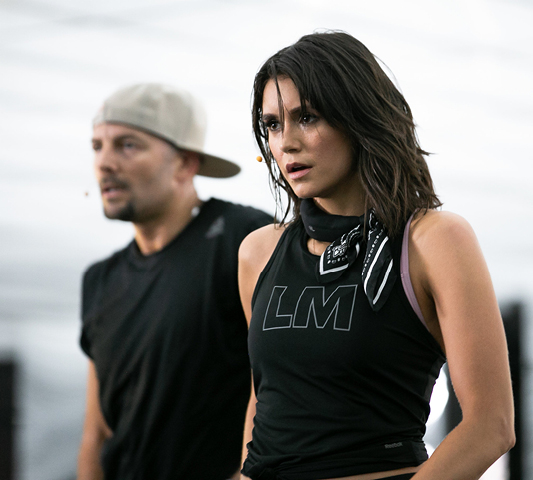
What should we expect?
The workout is 40 minutes long, and two thirds of it is just one big long routine. It’s definitely hip hop based, but the music is all over the show, all sorts of different sounds. There’s friendly feeling deep house, angry Kendrick-sounding hip hop, and a good sprinkling of house bangers that switch up the feel every now and then.
It’s cool because it’s an authentic representation of BODYJAM. A lot of the music is obscure as hell, but I think that’s a really good thing, and don’t get me wrong, the music is incredible. It means that as you’re learning the choreography, you’re also learning a whole new soundscape that matches it organically. It’s like when you hear a new piece of music the first time and you’re like “oh that’s pretty good”, but then when you hear it the sixth time you’re like, “THIS IS A BEAST TUNE!” You get that same feeling when you do this workout, three, four … ten times. You learn the music while you learn the dance.
I believe you also created some of the music – how did that come about?
For years I’ve worked with music software to edit, speed stuff up, chop it together. But recently I’ve been experimenting with dragging in samples, synths, and making original music from scratch. I went to the online university that we all love, YouTube, and got an awfully large amount of tips on how to make my songs sound like proper songs. I’m not there yet, but I’m getting better! We used a bunch of my tracks for the LES MILLS DANCE releases and, I can literally hear my progression as a producer from my early work to now. That motivates me a lot and sends me on new creative adventures. So early this year I made these two new songs I was really happy with, but they just needed some vocals or something. I sent them around Auckland to some rappers and performers and got back some sick vocals. I chopped it together, added all the reverb in the world and BAM!
What makes good music to dance to?
There are no rules, people love to dance to all sorts of music the world over. In saying that, there is a genre of music that’s literally called “dance” music. And it’s called dance music because for decades now, people haven’t been able to get enough of it. Hip hop is amazing to dance to, Latin is amazing to dance to, but dance music – EDM, techno, house, trap, twerk – is a type of music in my experience that takes people from zero to 100 the absolute fastest (real quick).
Are there any moves that are a must when it comes to a good dance workout?
No. Anything goes. The part that I love is finding out what type of new, quirky movement I can make fit nicely and flow flawlessly with a certain piece of music.
So is there anything particularly quirky about his new Reebok x Les Mills BODYJAM workout?
Ha, what isn’t quirky! There are jump turns. And there are sexy arm combos. There’s hard core afro, ticking, popping, there are crazy 80s dance moves that we pull out between routines. There’s even a freakin’ shimmy. It’s the large movement performed at high speed across so many dance styles that makes it BODYJAM. And I love how this workout really captures a group of mates just jamming out and enjoying themselves in front of mirrors to great music. Basically it’s us freestyling, captured for you to replicate at home.
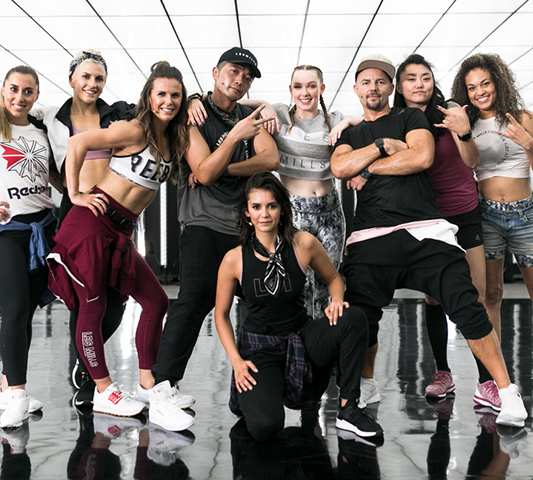
Is it just for dance-lovers? Will less experienced dancers love it too?
If you’ve done lots of dance you’ll love this workout because you’ll learn the choreography quickly, and then be able to dance it out hard very early on. At the same time, you’ll be challenged with new movements and the different dance styles.
And if you’ve got minimal dance experience, you’ll love this workout because it’s set up really slowly. There’s a chill learning curve from the first move – which is just bouncing your shoulders up and down on the beat – to the last move, which is a full 8x8 combo. And the journey from rehearsal to performance is slow, there is a lot of space in there for people to just play.
Whether you’re a dancer or not, the more you do it the more you’ll love it.
Why do we need to dance more?
Dance gives the opportunity to have a whole different experience wash over you. I am fortunate enough to teach at Les Mills Auckland City and three times a week I get to see the magic of dance on hundreds of faces. They come, they get out of their head, get out of their work brain, get out of their stress brain, and just do something else for an hour. Dance challenges you physically, mentally, and rewards you with beautiful funk endorphins.



